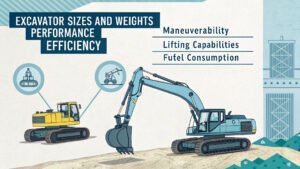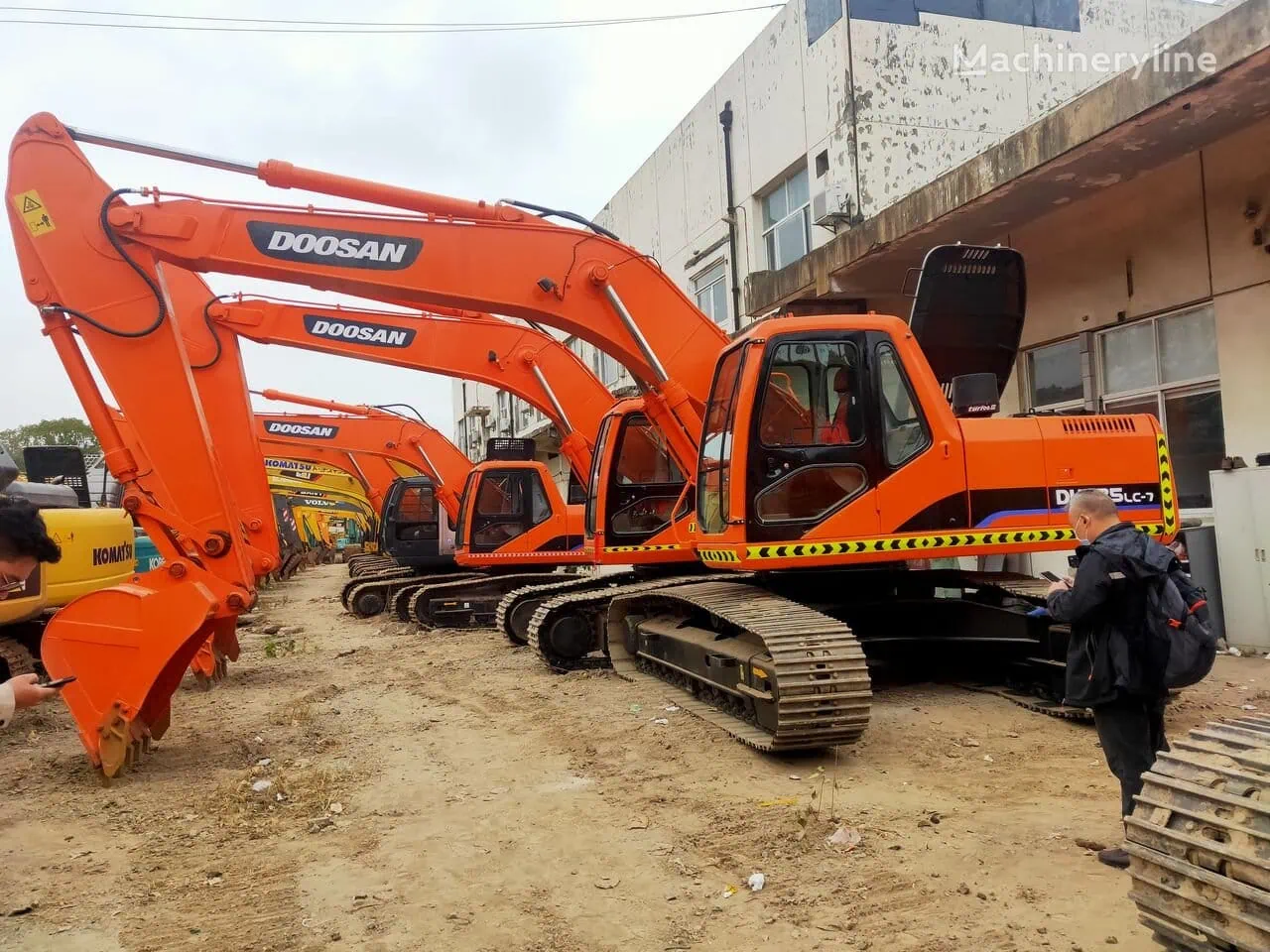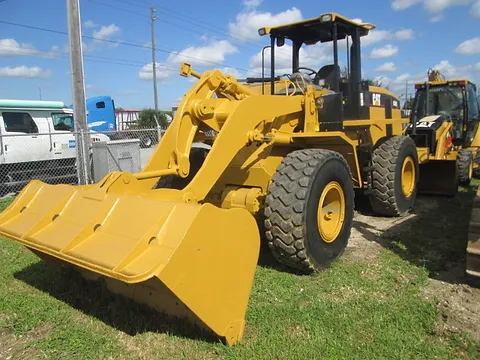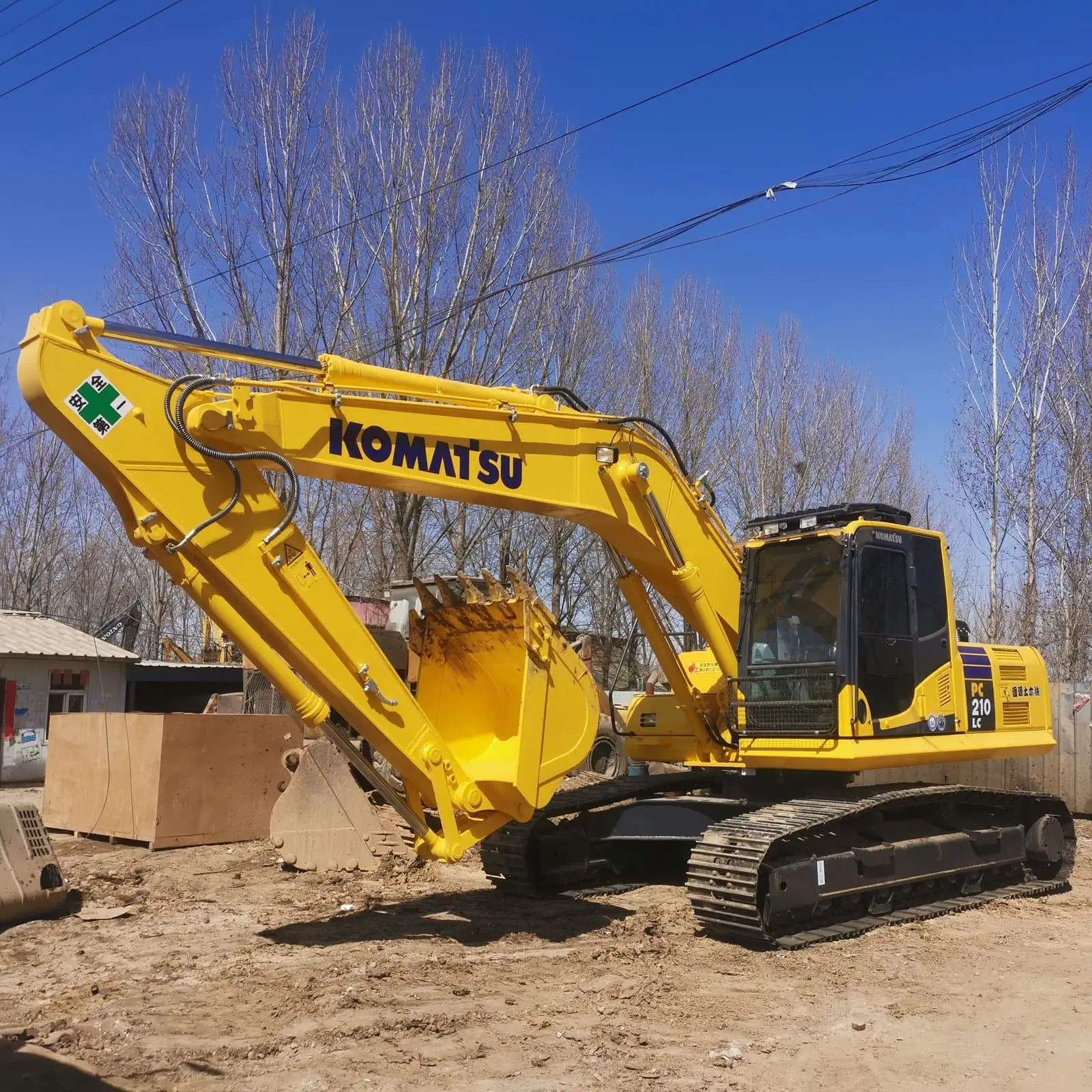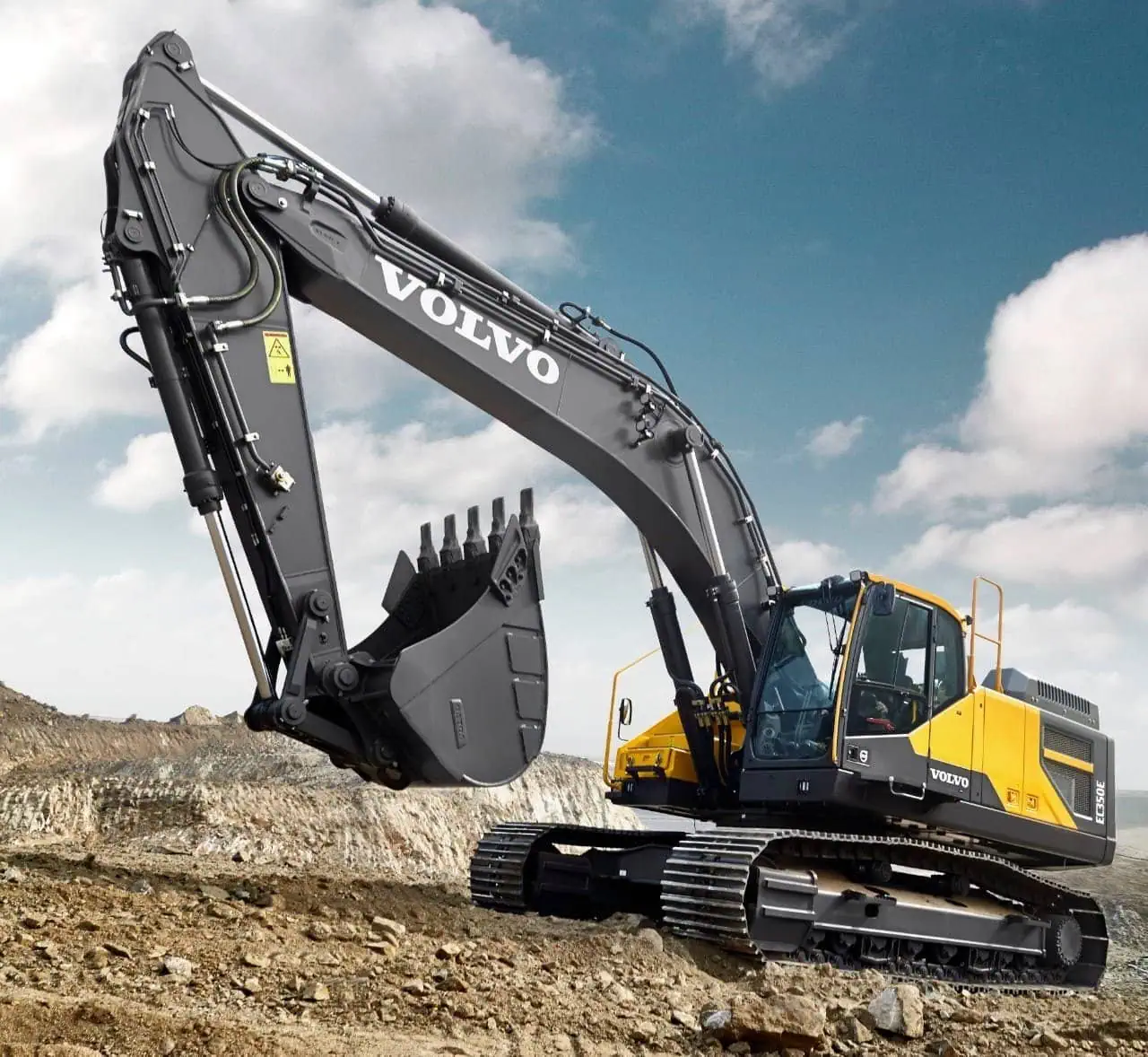Confused about what parts of an excavator are important to buy? You must know where it’s critical and where you can cheap out and still get a quality operation on the job site. In this guide, we’ll show you the important pieces that make up an excavator and explain how they all play a part in the end result you care about.
When purchasing an excavator, understanding its main parts is essential for ensuring its effectiveness and longevity. The undercarriage, boom and arm, bucket, hydraulic system, and engine all play critical roles in its operation. Regular maintenance of these components can extend the life of the excavator and prevent costly repairs. By knowing how each part functions, you can make an informed decision and get the best value from your investment.
Let’s take a closer look at the components and see how they contribute to those results.

Table of Contents
ToggleThe Undercarriage: The Foundation of an Excavator
The upper frame supports a multitude of components which make it possible for an excavator to do its job. It is the frame that provides the connection of the undercarriage with the house or deck of the excavator. This house, or deck, houses the motor and hydraulic systems, and to some extent the driver.
Key Components of the Undercarriage:
| Component | Function | Maintenance Tips |
| Tracks | Provide stability and traction on rough or uneven ground. | Regularly check for wear and tear; keep tracks clean and free of debris. |
| Rollers | Support the weight of the excavator and ensure smooth track movement. | Inspect for damage; replace when showing significant wear. |
| Sprockets | Interact with the tracks to drive movement. | Lubricate periodically to prevent rust and ensure smooth engagement with tracks. |
| Final Drive | Transmits engine power to the tracks for movement. | Check for oil leaks and perform routine inspections to ensure optimal operation. |
The undercarriage is usually made up of tracks, rollers, sprockets, and the final drive, with the tracks being the most critical for movement. Machines with tracks can typically maneuver better over uneven, muddy, or rocky surfaces than machines with wheels. Maintaining the undercarriage is crucial to maintaining your machine’s mobility over a variety of terrains. This includes checking the tracks regularly for damage, and ensuring that the rollers and sprockets are properly greased.
Boom and Arm: The Heart of Excavation
We’re going to talk now about the two most important parts of an excavator: the boom and the arm. As a matter of fact, on some jobs, you’ll never use the outriggers on your excavator. Sometimes you’ll never need to spin around or track the machine one inch because the only thing that you’re going to be using are the boom and the arm. They enable you to dig, lift, rotate, and do everything else you need the machine to do. Understanding how to use the boom and the arm is the key to operating a mini-excavator.
Boom:
The boom is the big, hydraulic arm that extends out from the hole where the operator sits. The reason it’s called a boom is that it looks like a big stick and it booms out. It’s attached to the body and is used to extend your reach so you can get at things that are far away from the machine or deep.
| Component | Function | Maintenance Tips |
| Boom | Extends the reach of the machine for deep or wide excavation. | Inspect for cracks or dents; check hydraulic lines for leaks. |
| Cylinder | Controls the extension and retraction of the boom. | Lubricate regularly; ensure no leaks in hydraulic seals. |
Arm:
The arm is a hydraulic extension attached to the bottom of the boom. It’s used for digging and lifting. When you watch the backhoe operate, you see it rotate, move, and pivot. It’s the arm that enables you to use the bucket
to move things, dig, and put dirt in a hole. It’s also what swings the bucket to lift and then dump it. It’s your precision arm, and it’s usually under your direct control via a joystick or some other type of actuating device.
| Component | Function | Maintenance Tips |
| Arm | Lifts and positions the bucket, enabling precise control over excavation. | Check for hydraulic fluid leaks; ensure cylinders move smoothly. |
| Hydraulic Cylinder | Powers the movement of the arm for precise lifting and digging. | Inspect seals and replace if they show signs of wear. |
Boom and arm. Together, they’re the things that allow you to reach farther and let your machine dig here or dig over there. They are your range steering and digging levers. Again, make sure they’re well greased and check them every day. You’re looking for hydraulic leaks, cracks, or any other mechanical issues that could turn into a disaster.
If you have a problem, shut it down right away and call your mechanic. Don’t wait until somebody gets hurt or you destroy the machine. Check that your swing axis, boom and arm pivot pins, and all the other pins and bushings that hold this whole assembly together have enough grease and are in good shape so they don’t quit on you and cause you a huge headache. Efficient Operating Practices

Bucket: The Excavator’s Primary Tool
Bucket. This is the tool that digs the dirt, scoops it up, dumps it, and does all the hard work. This is as good as it gets. It’s basic; the whole machine is designed around that big metal bucket. Are you surprised? No, you shouldn’t be. That’s why you bought one of these machines, to dig up dirt, rocks, and whatever else is in your way.
Types of Excavator Buckets:
| Bucket Type | Function | Best Use Case |
| Standard Bucket | Suitable for general-purpose digging in soft to medium soil. | Ideal for digging trenches, foundations, and landscaping. |
| Trenching Bucket | Designed for narrow, deep trenches. | Perfect for pipeline installation and utility trenches. |
| Rock Bucket | Built to handle tough materials like rocks and rubble. | Best for mining, quarry work, or digging through rocky soil. |
| Hydraulic Thumb | Useful for grabbing and handling materials. | Great for lifting and placing large objects like logs and rocks. |
Examine the teeth. Most small buckets don’t have replaceable teeth. You still need to make sure they’re not too dull or worn down. If they are, you’ll have to buy a new bucket. It shouldn’t be dull. It requires a sharp edge and a hard bite. This is the business end of your machine. If you take the corner of an old cutting edge or bucket and beat the hell out of it, you’re risking getting hurt. A new cutting edge will help you get more work done in less time, which is what the machine is all about.
Hydraulic System: The Power Behind Movement
Hydraulics. Without the hydraulic system, your machine would be dead as a doornail. Your hydraulics make your boom, arm, bucket, and all the other parts move with the force god intended them to have. This is where the big power from your little diesel engine is harnessed. Your hydraulic system uses fluid under pressure to push on something else. This is called fluid power.
Believe it or not, one of the first fluid power systems was water coming from one end through a pipe under pressure building up in a big bag of water that was lifted. This is how the Pyramids were built. They used leverage, pipe, and water to lift the blocks. You use hydraulic pressure to make the boom go up and down.
Key Components of the Hydraulic System:
| Component | Function | Maintenance Tips |
| Hydraulic Pump | Circulates hydraulic fluid under pressure, powering all movements. | Check fluid levels regularly; replace worn or damaged pumps. |
| Hydraulic Cylinders | Convert hydraulic fluid into mechanical force for lifting and digging. | Inspect seals and check for leaks; ensure smooth operation. |
| Hydraulic Valves | Control the flow of hydraulic fluid to various parts of the excavator. | Clean regularly to prevent blockages; replace damaged valves. |
The hydraulic system in an excavator is vital. If the hydraulics aren’t working, then you might as well park the machine. In certain situations, poorly maintained hydraulics will kill you. Make sure you check your fluid levels every day. Make sure you don’t have any leaks. Investigate those hydraulic hoses. They are one of the most expensive things to repair, so you don’t want to abuse them.
Engine: The Power Source
The excavator’s engine also serves as the powerhouse, providing the energy required for movement and operation. Excavators primarily use diesel engines, but electric engines are becoming more common in new eco-friendly models.
Types of Engines:
| Engine Type | Advantages | Disadvantages |
| Diesel Engine | More powerful, better for heavy-duty tasks, and fuel-efficient. | Emits more emissions, louder operation. |
| Electric Engine | Environmentally friendly, quieter, and more efficient in urban environments. | Limited range and power for heavy-duty applications. |
It’s important: you want to keep your engine running smoothly for years. The number-one cause of engine failure is the lack of proper maintenance. That means regular oil changes, checking coolant levels, and keeping the engine compartment free of debris.
Swing Motor and Slew Ring: Enabling Rotation
The swing motor and slew ring allow the excavator to rotate the upper structure completely around: 360°. So instead of having to turn your whole machine, you can sit right here and rotate the body to any position you need it to be.
Key Components of the Swing System:
| Component | Function | Maintenance Tips |
| Swing Motor | Powers the rotation of the upper structure, allowing 360° movement. | Lubricate regularly; check for wear on bearings. |
| Slew Ring | Provides a stable bearing for smooth rotation. | Inspect for cracks and ensure the ring is properly lubricated. |
This system enables you to turn the upper structure of the excavator independently from the lower structure. The swing motor and slew ring help you do that. Maintain the pivot yourself, and it will make your life easier.
Cabin and Operator Controls: Comfort and Precision
The cab is your office, and it all starts right here. This is where you’re going to be controlling the excavator. Once the day starts, your world revolves around this cab. It is where you have control of your life, control of your machine, and control of your destiny for the day. And that’s where you’ll be. All the controls are in the cab. You’ve got joysticks. You’ve got your feet on the floor controlling your travel. You’ve got your monitor screen. Everything you need is right here in the cab.
| Component | Function | Maintenance Tips |
| Joystick Controls | Provide precise control over the boom, arm, and bucket. | Keep controls clean and lubricated to avoid stiff movements. |
| Pedals | Control machine movement and other functions like swinging. | Regularly inspect for wear and tear; clean debris from pedals. |
| Ergonomic Design | Ensures operator comfort and reduces fatigue. | Adjust the seat for optimal comfort; check for wear on upholstery. |
The cab is ergonomically designed to help you work with minimal fatigue. The controls should all fall right within your hands with no stretching or straining. Everything is easy to reach. You want to be safe, so the cab includes a seat belt, roll-over protection, and safety glass. All these are designed with your purpose in mind, such as having a dual-paned front window to keep your front window clear of fog.
Electrical System: Powering the Excavator’s Technology
The electrical system is everything on this machine that has wires and needs power. This includes the engine control system, the lighting systems, sensors everywhere, and all kinds of other electric devices. In short, anything that needs power is part of the electrical system on your machine.
Key Components of the Electrical System:
| Component | Function |
| Alternator | Charges the battery and powers the electrical components. |
| Wiring | Transmits electrical signals to various parts of the machine. |
| Sensors | Monitor the performance and health of the engine and hydraulic system. |
Treat this system just like you did the engine and hydraulics. Keep it clean, tight, and dry. You must do regular maintenance. If you take care of it, it will last a long time. If you ignore it, you will break down and have unexpected electrical failures.
Tracks and Tires: Mobility Across Different Terrains
Tracks and tires determine the mobility of your machine on the ground. Whether you have tracks or tires is determined by what jobs you bid and the type of work you’re going to be doing with your equipment.
| Component | Tracked Excavators | Wheeled Excavators |
| Tracks | Provide stability on soft, uneven, or rough ground. | Offer faster speeds but less stability on soft ground. |
| Tires | Not typically used for heavy-duty excavation. | Ideal for urban construction or smoother surfaces. |
Additional Attachments: Enhancing Versatility
Let’s talk about the different types of attachments for your excavator. With the right attachment, you can do a lot more than just dig a hole. Here are some examples:
- Hydraulic Hammers: For demolition work.
- Grapples: For handling large materials.
- Augers: For drilling holes in the ground.
Common Excavator Attachments:
| Attachment | Function | Best Use Case | Maintenance Tips |
| Hydraulic Hammer | Used for demolition tasks, such as breaking concrete or rocks. | Ideal for construction and demolition of hard materials. | Regularly check for oil leaks; inspect the hammer for cracks. |
| Grapple | Used for handling and moving large materials such as logs, rocks, or debris. | Best for recycling, waste management, and heavy lifting. | Lubricate moving parts; inspect hydraulic lines for wear. |
| Auger | Drills holes in the ground for tasks like fence posts or foundation piles. | Useful for landscaping, agriculture, and construction. | Clean after each use; inspect the drill bit for wear. |
| Forks (Pallet Forks) | Designed for lifting and moving pallets or materials in bulk. | Perfect for material handling and lifting operations. | Ensure forks are securely attached; lubricate moving parts. |
| Trencher | Used to dig narrow, deep trenches for utilities like water pipes or cables. | Great for infrastructure projects such as utility installation. | Clean the trenching blade regularly; inspect for wear. |
| Shears | Used for cutting through metal, steel, and other tough materials. | Ideal for scrap metal handling and demolition projects. | Check the blade condition regularly and sharpen as needed. |
| Vibratory Plate Compactor | Used to compact soil, gravel, or sand for a solid foundation. | Excellent for construction, roadwork, and paving projects. | Inspect for hydraulic leaks; ensure the vibrating plate functions smoothly. |

Maintenance and Care for Excavator Parts
Again, maintenance is key. Everything we’ve discussed today will help you keep the machine running. Changing the oil, monitoring the coolant, keeping it cleaned out, the wiring, the tires, and everything else will help guarantee your machine’s dependability and life expectancy.
- Keep the cooling system properly maintained, including changing the coolant and inspecting the water pump for leakage. Inspect the belts and keep them properly adjusted and in good condition.
- Check the filters, keep them clean and properly maintained. Inspect for fuel leaks and keep the area around the machine clean and free of all debris.
- Keep the hydraulic cylinders clean and free of all debris including any on the rods to prevent damage to the seals. Inspect the Undercarriage regularly for damage and wear.
- Check the Hydraulic Fluid levels and inspect hoses for leaks. Keep the Engine well maintained with regular oil changes and filter replacements.
Conclusion
To sum up, every part of an hydraulic excavator is essential to its operation. The typical machine has an undercarriage, house, carbody, and front workgroup. The parts include the undercarriage, engine, hydraulic system, power train, and attachments. Hopefully this lesson on excavators and their parts has helped you understand more about these versatile machines.
The more you know about a machine, the better decisions you can make for acquiring one. And once you own an excavator, knowing as much as possible will save you money in fuel, maintenance, and repairs and help you get more done with the machine. And by the way, the technology in these machines just keeps getting better. The future talk is about more automation, better hydraulics, and using fuel more efficiently, etc. So, it’s likely these machines will be more productive and “greener” in the future.Our company specializes in all kinds of second-hand construction machinery and accessories, with a complete range. If you need them, please feel free to contact me.


